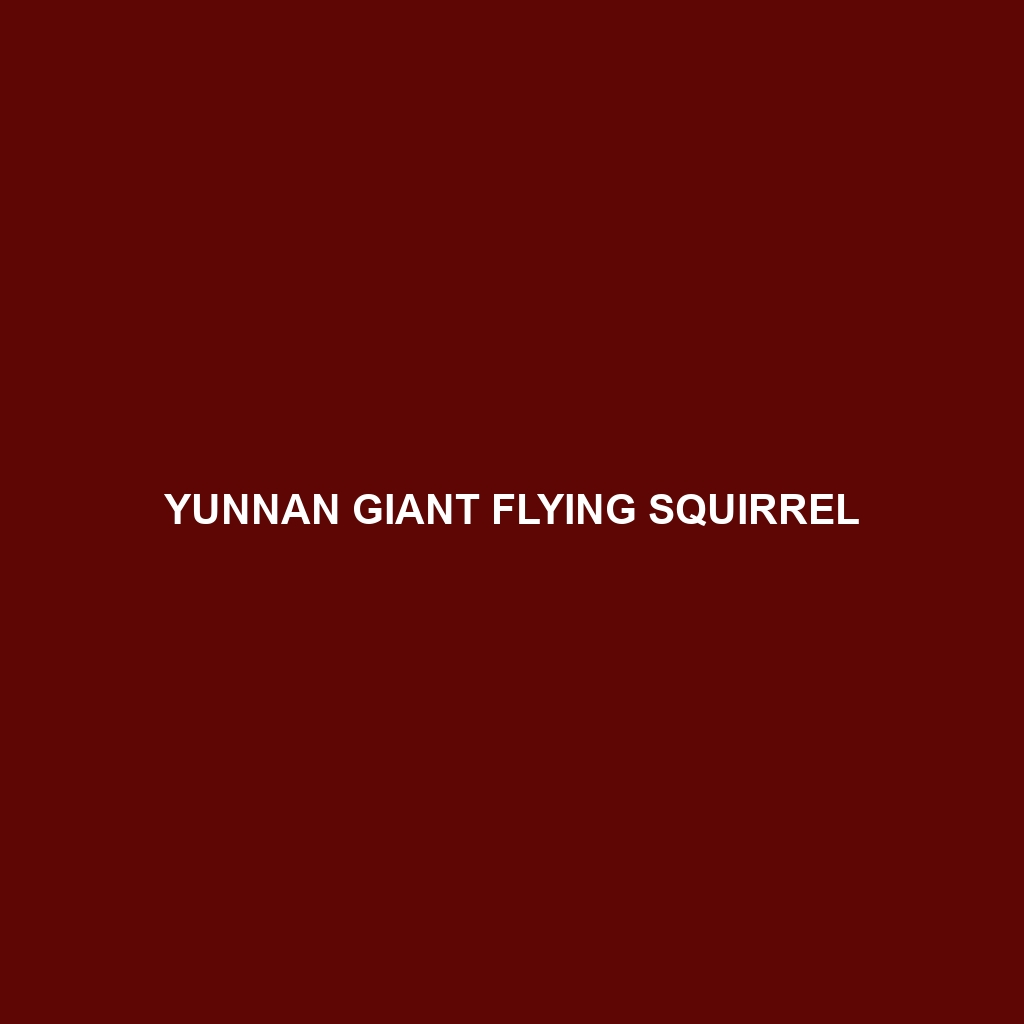Yunnan Giant Flying Squirrel (Scientific Name: )
Common Name: Yunnan Giant Flying Squirrel
Scientific Name:
Habitat
The Yunnan Giant Flying Squirrel is primarily found in the mountainous regions of Yunnan province in southwestern China. This species thrives in temperate forests, where it occupies a variety of habitats, including moist montane forests and subtropical mixed forests. The habitat encompasses areas with abundant tree cover, which is essential for their gliding ability and for accessing their food sources.
Physical Characteristics
The Yunnan Giant Flying Squirrel is notable for its large size, measuring up to 1 meter (approximately 3.3 feet) in length, including its bushy tail. Its fur is predominantly dark brown or gray, with distinct lighter underbelly colors that can range from cream to pale yellow. This species features large, prominent ears, and expansive patagium, which are the skin membranes that allow them to glide gracefully between trees. Their vibrantly colored fur and large, expressive eyes are among the most distinctive characteristics of this remarkable rodent.
Behavior
Typically nocturnal, the Yunnan Giant Flying Squirrel exhibits various fascinating behaviors. They are highly social animals, often found in small groups, and are known for their acrobatic gliding abilities. These squirrels use their strong hind limbs and patagium to glide from tree to tree to evade predators and forage for food. Their vocalizations, including high-pitched calls, play a critical role in communication among individuals within their habitat.
Diet
The diet of the Yunnan Giant Flying Squirrel primarily consists of a diverse array of fruits, nuts, and leaves, making them herbivorous foragers. They have a preference for soft fruits and seeds, which are plentiful in their forested environments. This diet not only provides necessary energy but also plays a significant role in seed dispersal within their ecosystem, contributing to forest regeneration.
Reproduction
Yunnan Giant Flying Squirrels have a breeding season that typically occurs in late spring to early summer. After a gestation period of approximately 60 to 75 days, females give birth to one or two offspring, which are born blind and entirely dependent on their mother for several weeks. Maternal care is prolonged, with juveniles learning critical survival skills from their mother during this time before they become independent.
Conservation Status
The Yunnan Giant Flying Squirrel is currently classified as Vulnerable according to the IUCN Red List. Habitats are threatened by logging and land conversion for agriculture, increasing the urgency for conservation efforts aimed at protecting this unique species and its forest home.
Interesting Facts
An interesting fact about the Yunnan Giant Flying Squirrel is that they can glide for distances over 150 meters (approximately 490 feet), thanks to their large patagium. This remarkable ability helps them navigate the forest canopy efficiently. Furthermore, they are often confused with other flying squirrels, but their size and coloration make them particularly distinguishable.
Role in Ecosystem
As a significant herbivore in their ecosystem, the Yunnan Giant Flying Squirrel plays a crucial role in seed dispersal, which aids in maintaining forest biodiversity. Their feeding habits promote healthy forest regeneration, impacting various aspects of their habitat. They also serve as prey for larger predators, thereby contributing to the ecological balance of their environment.
